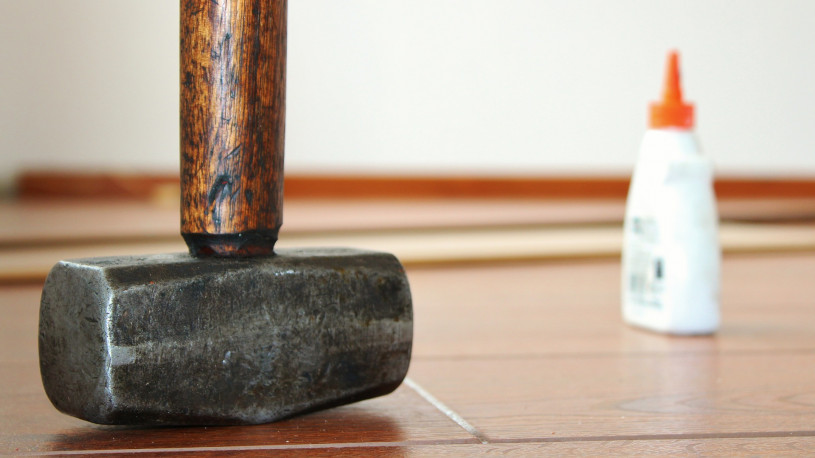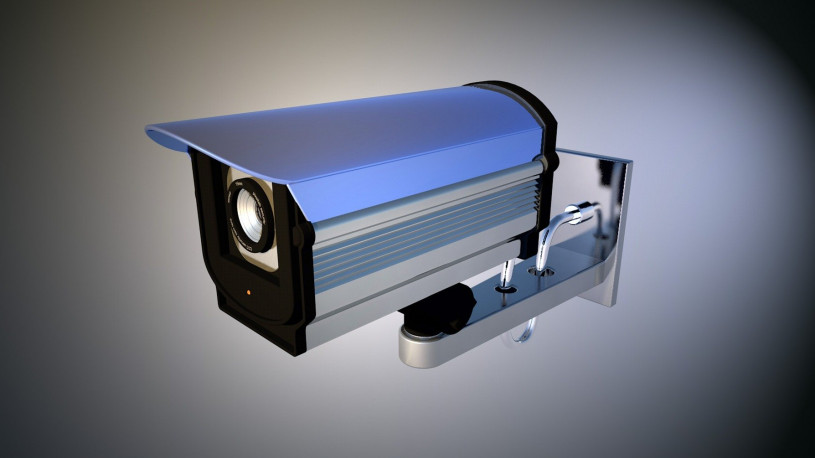-
A Dry Adhesive that Holds in Extreme Hot and/or Cold
 Continue Reading
Continue ReadingScientists have discovered what they believe to be the best performing, extreme-condition glue in the world. By vertically aligning carbon nanotubes with tops bundled into nodes, they have found a dry adhesive that works effectively in temperatures as low as -196°C, and incredibly, performs even better in temperatures as high as 1000°C.
Surprising even themselves with the test results, the researchers, which included Prof. Liming Dai and Feng Du from Case Western Reserve, Ming Xu, from Case School of Engineering, and Sabyasachi Ganguli and Ajit Roy, of the Air Force Research Laboratory, used electron microscope technology to find out exactly how an adhesive could get stronger as the temperature rose.
By doing this they discovered that the basic adhesion was created by the bundled nodes penetrating into the cavities of a surface, and then collapsing into ‘web-like structures’. As temperatures rise, many surfaces the flexible nanotubes no longer remain vertically aligned but collapse into web-like structures.
“When you have aligned nanotubes with bundled tops penetrating into the cavities of the surface, you generate sufficient van der Waal’s forces to hold.” Xu explained, “The dry adhesive doesn’t lose adhesion as it cools because the surface doesn’t change. But when you heat the surface, the surface becomes rougher, physically locking the nanotubes in place, leading to stronger adhesion as temperatures increase.”
Moreover, the tests showed that the adhesive functioned well through repeated periods of freezing and heating. While the online science journal Phys.org notes, “The researchers dub this adhesion mechanism ‘nano-interlocking.’”
The research team described the excellent results in the journal Nature Communications, as follows, “This unusual adhesion behaviour can be rationalized [as] the plasma-induced carbon nanotube (CNT) top nodes can easily penetrate into cavities of a naturally or temperature-induced rough surface, followed by temperature-induced deformation of the flexible double-walled CNT segments along the surface profile to form nano-interlocks. The screw-like nano-interlocking interaction distinguishes the CNT dry adhesive reported in this study from other conventional adhesives, including conventional CNT dry adhesives and polymeric dry adhesives. Our CNT dry adhesives sustain many temperature transition cycles over a wide operational temperature range from −196 to 1,000 °C with a high thermal stability and a temperature-enhanced adhesion strength up to 143 N cm−2 (one of the highest adhesion strengths among all known pure CNT dry adhesives).”
Diagram showing the preparation procedure of the CNT dry adhesive.
Top-view scanning electron microscopic (SEM) image of the rationally designed fibrillar adhering surface generated by plasma etching the nonaligned, entangled top nanotube segments on the as-grown VA-DWNT array.
The researchers noted that the adhesive should work on a wide variety of surfaces. While the tests were only conducted on copper foil; it is a material that is not unique in the way it changes when heat is applied. The surface of many materials, including polymer films and other metal foils, become rougher when heated, making them good targets for this kind of adhesive.
Although the team suggests that an adhesive as tough as they have discovered would be ideal for use in space, the ability to bind two surfaces together at the extremes of both hot and cold will have multiple applications. Possibly uses include on deep sea craft, especially those exploring underwater thermal vents, or on aircraft which can reach very high temperatures on runways in hot climates, before climbing into the sub-zero conditions of the stratosphere.
While very large scale production may still be some way in the future, many in the adhesives industry are already speculating on where is best to stick such a resilient adhesive.
Photo credit: Nuaawhaa
Photo credit: Ming Xu, Feng Du, Sabyasachi Ganguli, Ajit Roy and Liming Dai
-
Agricultural Industrial Espionage
 Continue Reading
Continue ReadingIn an industry where information is power, dishonest competitors may steal agrichemical company data and use it to their advantage. While this may sound a little like a James Bond movie plot, industrial espionage is a real event.
Take for example, the case from October 2016, when a Chinese man was sent to prison for 3 years. According to the Des Moines Register he, “pleaded guilty in January to conspiracy to steal trade secrets from Pioneer and Monsanto. The crime was part of a years-long conspiracy involving several Chinese citizens aimed at stealing valuable patented corn seeds from Iowa farm fields so they could be smuggled to a Chinese agriculture conglomerate.”
Whilst the case might be slightly laughable, as according to the New York Times, the defendant was caught, “when a manager at a DuPont research farm in east-central Iowa noticed a man on his knees, digging up the field. When confronted, the man, Mo Hailong, who was with his colleague Wang Lei, appeared flushed. Mr. Mo told the manager that he worked for the University of Iowa and was travelling to a conference nearby. When the manager paused to answer his cellphone, the two men sped off in a car, racing through a ditch to get away.”
While the attempt might seem slightly amateurish, with the defendants concealing, “stolen seeds in, among other things, microwave popcorn boxes and napkins from Subway restaurants.” the fact is that the value of the theft is significant. A recent report by the McKinsey consultancy, valued the agricultural industry at $5 trillion dollars a year, and with numbers that big, even the smallest part of the business is life changing money for individuals.
Evidently, the temptation to break the law is great, even for established companies. As in the Iowa case it was established, “[after] about a year of F.B.I. surveillance of Mr. Mo and his associates [that] all but one of them worked for the Beijing Dabeinong Technology Group or its subsidiary Kings Nower Seed.”
Worse still, is that this case is not an isolated incident, with Robert Anderson Jr., assistant director of counterintelligence at the F.B.I. explaining that, “Agriculture [industrial espionage] is an emerging trend that we’re seeing.” Adding that, until two years ago, “the majority of the countries and hostile intelligence services within those countries were stealing other stuff.”
Such is the power of a trade secret in modern agribusiness, that attempts to steal it are replacing efforts to learn military secrets.
Possibly, this is part of what geo-political experts call ‘food security’, and the ability of nations to feed their growing populations, maybe it is just unscrupulous businessmen taking a short cut to profit. But if the trend for industrial espionage in the agricultural industry continues, then agrichemical companies should take much greater care of their data.
In the future, attempts to steal confidential information may not just be a case of bad luck, but instead will be something that is predictable and certain to happen at some time in a company’s lifespan. When it comes to agribusiness data, industrial espionage should leave you neither shaken nor stirred, but should simply be a case of, ‘We’ve been expecting you Mr. Bond.’
Photo credit: Ted Genoways
-
A New Greener AND Cleaner Soap May be about to Change the Industry
 Continue Reading
Continue ReadingThe $635 billion soap industry has a dirty little secret. Their products are far from perfect, and not very eco-friendly, as their manufacture uses a variety of petrochemical products and fossil fuels that give them a large environmental impact. Despite this, they aren’t always very good at cleaning, especially for those who live in regions with hard water. They also aren’t very effective in washing with cold water, as anyone who has tried to rinse out shampoo without warm water will tell you.
Worse still, in trying to make soap and detergents more effective, other chemicals products are often added which can have a negative impact if the skin suffers a bad reaction, or is simply washed away, further polluting water systems.
However that may all change, as a research team has developed an improved soap that they claim performs better in cold and hard water, requires fewer chemical additives and is much better for the environment as its feedstock is based on soybeans, coconuts and corn.
As the scientific journal Science Daily reports, “Funded by the U.S. Department of Energy, researchers from the Catalysis Center for Energy Innovation [have] developed a new chemical process to combine fatty acids from soybeans or coconut and sugar-derived rings from corn to make a renewable soap molecule called Oleo-Furan-Surfactant (OFS). They found that OFS worked well in cold water where conventional soaps become cloudy and gooey rendering them unusable. Additionally, OFS soaps were shown to form soap particles (called micelles) necessary for cleaning applications at low concentrations, which significantly reduces the environmental impact on rivers and lakes.”
The report continues by stating how, “The new renewable OFS soap was also engineered to work in extremely hard water conditions. For many locations around the world, minerals in the water bind with conventional soaps and turn them into solid goo. To combat this problem, most existing soaps and detergents add an array of additional chemicals, called chelants, to grab these minerals and prevent them from interfering with soap molecules. This problem has led to a long list of extra chemical ingredients in most conventional cleaning products, many of which are harmful to the environment.”
However, the new OFS soap avoids the need to use added chelants, because its natural ingredients do not bind as strongly with the minerals in hard water, as they do with conventional soap. As a result, the research team has found that the OFS molecules could form soap particles (micelles) even when hard water conditions were increased 100-fold.
The research team explained their discovery in more detail when publishing their results in the American Chemical Society journal Central Science. Here they outlined their research process as follows:
“An important advance in fluid surface control was the amphiphilic surfactant composed of coupled molecular structures (i.e., hydrophilic and hydrophobic) to reduce surface tension between two distinct fluid phases. However, implementation of simple surfactants has been hindered by the broad range of applications in water containing alkaline earth metals (i.e., hard water), which disrupt surfactant function and require extensive use of undesirable and expensive chelating additives. Here we show that sugar-derived furans can be linked with triglyceride-derived fatty acid chains via Friedel–Crafts acylation within single layer (SPP) zeolite catalysts. These alkylfuran surfactants independently suppress the effects of hard water while simultaneously permitting broad tunability of size, structure, and function, which can be optimized for superior capability for forming micelles and solubilizing in water.”
Co-author of the study, and associate professor of chemical engineering and materials science at the University of Minnesota, Paul Dauenhauer, described the breakthrough as game changing for the soap and detergent industry. Stating that, “Our team created a soap molecule made from natural products, like soybeans, coconut and corn, that works better than regular soaps and is better for the environment. This research could have a major impact on the multibillion-dollar cleaning products industry.”
Dauenhauer’s colleague, chemical engineering and materials science graduate student, Kristeen Joseph agrees that the discovery will change the industry, saying, “The impact of OFS soaps will be greater than their detergent performance. [Because] OFS is made from straight carbon chains derived from soybeans or coconut which can readily biodegrade. These really are the perfect soap molecules.”
A greener cleaner? A better soap? That sounds like something that will interest many surfactant producers.
So given that the conventional soap and detergent industry is currently producing a less effective product from an unsustainable resource, isn’t it time for all cleaning product manufacturers to look for fossil fuel alternatives?
Photo credit: Paul J. Dauenhauer, University of Minnesota


